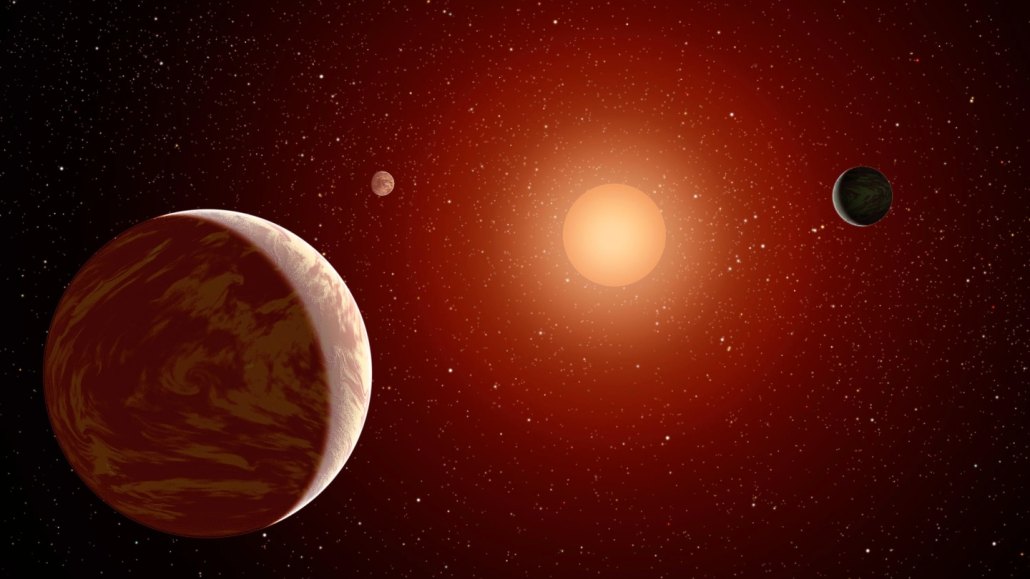
Ultracool dwarf stars the size of Jupiter (one illustrated) don’t put out enough ultraviolet light to start life, but could reveal other routes to the formation of basic, biological chemicals.
NASA
- More than 2 years ago
A survey of small, cool stars is helping to narrow in on the conditions that might set the stage for life beyond our solar system.
A look at about 200 ultracool dwarf stars shows that they lack sufficient ultraviolet light intensity to have the potential to jump-start life, researchers report December 1 in the Monthly Notices of the Royal Astronomical Society. That may initially seem to be bad news for finding signs of alien life on distant planets. But the diminutive stars could instead serve as test beds to determine what other conditions can create the chemical foundations of life.
Compared with our sun, the dwarf stars in the new study are minuscule, roughly the size of Jupiter and weighing about a tenth as much as the sun. They’re also among the most common types of stars. And because they’re cool and comparatively dim, it’s often easier to spot planets orbiting them than it is in the glare of large bright stars. Astronomers studying the tiny red star TRAPPIST-1, for example, found that it hosts seven Earth-sized planets, including three that may be within the star’s habitable zone, where conditions are amenable to life (SN: 2/22/17).
For life to exist on a habitable planet, though, it must start somehow. One possibility is that UV starlight provides the energy needed to link together the hydrogen, oxygen, carbon, nitrogen, sulfur and other atoms that make up the compounds that are precursors to life.
With that in mind, space scientist Antígona Segura and colleagues used the Transiting Exoplanet Survey Satellite to measure the amount of UV radiation — among other things — emitted from 208 comparatively nearby ultracool dwarfs within 130 light-years from Earth (SN: 4/12/18). The stars they studied do emit UV light, as our sun does, and many produce bursts of UV when they let off flares. But overall, the UV energy the small stars release is too low to forge the chemicals needed to kick-start life, the team found.
The dearth of UV light doesn’t necessarily quash hopes of finding life around such stars. “UV is an energy source for prebiotic chemistry that we can measure, and that is why we focused on it,” says Segura, of the National Autonomous University of Mexico in Mexico City. “But there are many other energy sources, like cosmic and stellar particles, and particles, radiation and heat produced by radioactive decay, to name a few.”
Ultracool stars might be useful to discover whether something other than UV light can get life going. “We should search for life on the planets that have the least [UV] activity, where we can know with confidence that UV-driven prebiotic chemistry cannot happen,” says Paul Rimmer, a University of Cambridge astrophysicist who was not involved in the study. “If we find evidence of life on these [types of] planets, this will show that there are other paths to life.”
Also, Segura notes, sources of energy that could start life can also make planets less habitable for more complex life-forms. “We cannot currently say which [effects] would prevail. The best approach now is to study case by case and wait for more observational constraints, like for the case of the TRAPPIST-1 system.”
If astronomers eventually find life on planets orbiting ultracool dwarfs, it will confirm the potential for UV-free origins of life. But, Rimmer says, if it turns out that there are no signs of habitability on planets around the many small, dim dwarf stars we see, that would lower estimates of the likelihood of finding life outside our solar system. Either way, future surveys of ultracool dwarf stars could give researchers a better handle on the possible prevalence of extraterrestrial life in the universe.







